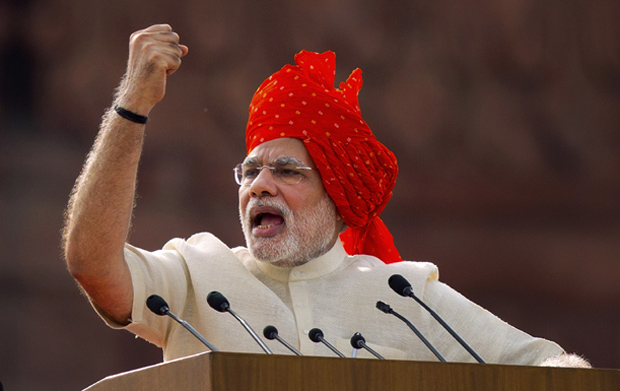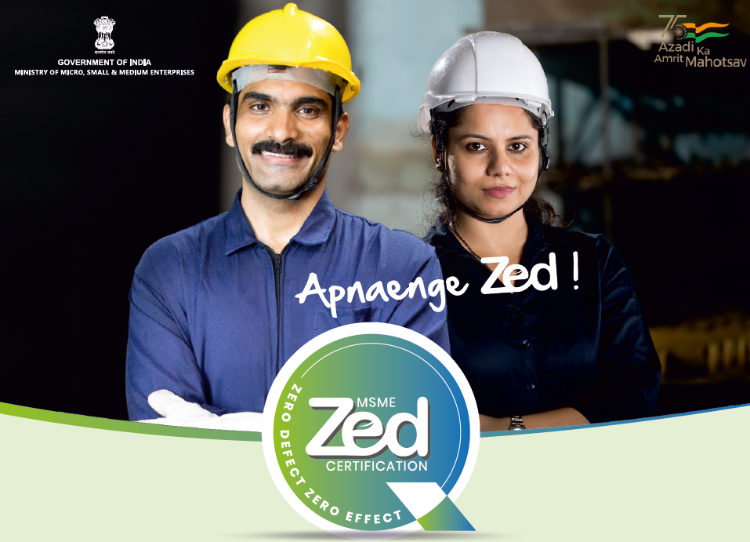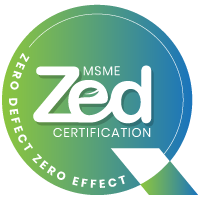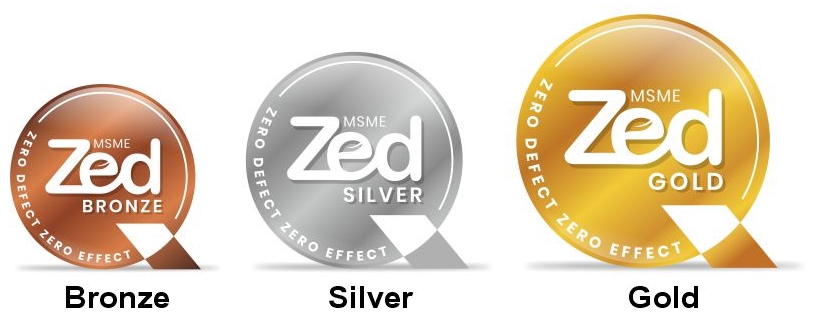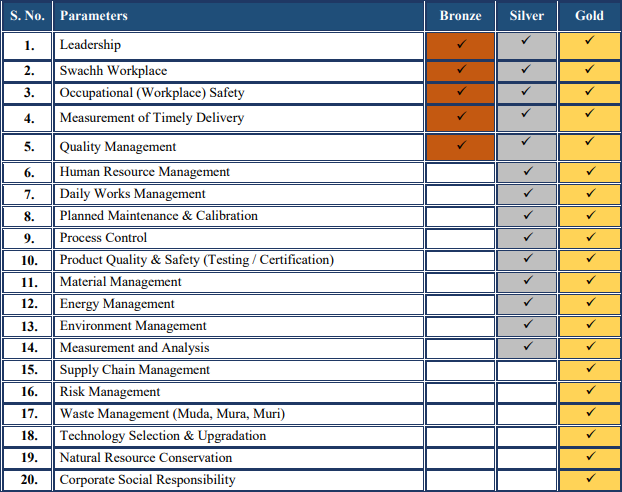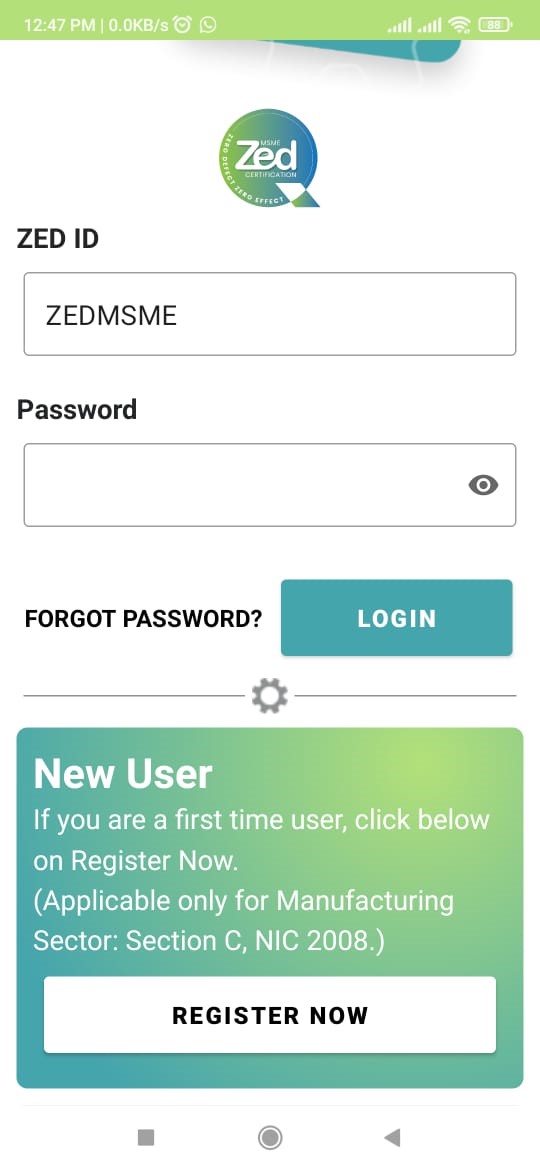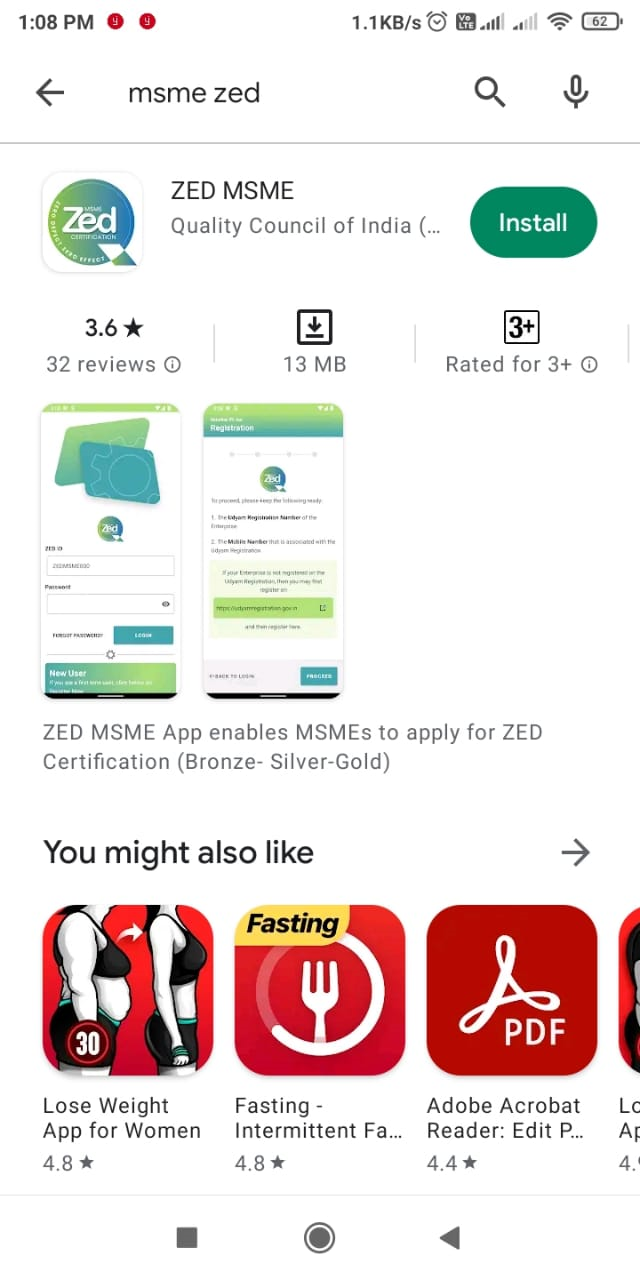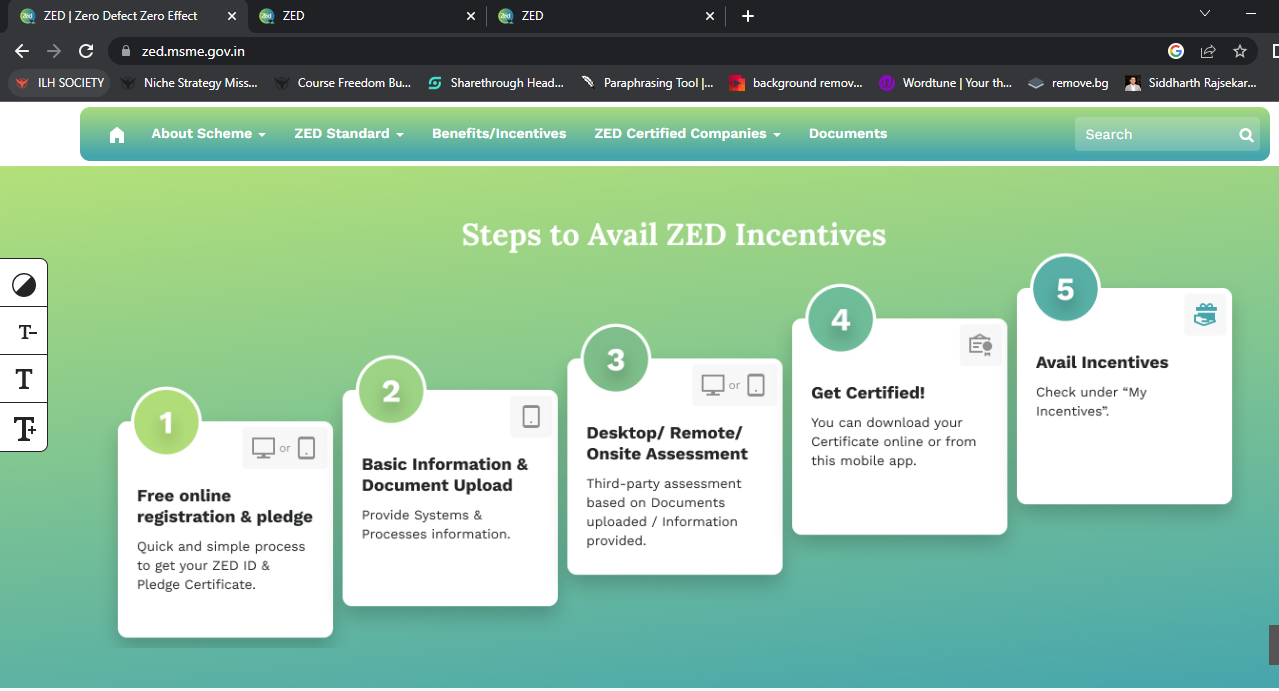MSME Sustainable (ZED) Certification
How to get ZED Certification in Bangalore?
Addressing the nation on India's 68th Independence Day, Hon'ble Prime Minister Shri Narendra Modi urged the industry, especially the Micro, Small and Medium Enterprises (MSMEs) of India, to manufacture goods in the country with "zero defects" and to ensure that these goods have a "zero effect" on the environment. He said "We should manufacture goods in such a way that they carry zero defect and that our exported goods are never returned to us. We should manufacture goods with zero effect that they should not have a negative impact on the environment
As the MSMEs are amongst the strongest drivers of economic development, innovation and employment, it becomes imperative to strengthen their ecosystem. The Government of India envisioned Zero Defect & Zero Effect (ZED) initiative to enhance MSME competitiveness, make them sustainable and transform them as National and International Champions.
The ZED Certification model or standard has been developed for the manufacturing sector. The Model aligns best practices in an integrated and holistic manner to help the MSMEs adopt systems that would help them embark on the ZED journey while enhancing their competitiveness and sustainability.
Why Choose us for MSME ZED Consultancy in Bangalore or Elsewhere?
- A 30-year veteran of the Quality Management profession.
- Tool created for the QMS fraternity that streamlines, simplifies & implements "Quality" and "Systems".
- Using tools-saves time, reduces administrative work, and eliminates the need to write or rewrite similar data.
- QMS used as a strategy for “Business Growth ".
- Increase, money, knowledge, and confidence.
- Our clients don't use XLS or Word formats, print sheets, or hand-write the registers. They adopt Manreqa ERP software instead.
How many levels of Certification for MSME Zed Certification?
MSMEs can apply for certification at any of the following three levels:
- Certification Level 1: BRONZE (5 Parameters)
- Certification Level 2: SILVER (14 Parameters)
- Certification Level 3: GOLD (20 Parameters)
How many levels of Certification for MSME Zed Certification?
An organization applying for a particular certification level i.e., Bronze/Silver/Gold under the MSME Sustainable (ZED) Scheme will be assessed on the following parameters, as applicable:
Benefits of ZED Certification?
- Encourage and enable MSMEs for manufacturing of quality products using latest technology, tools & to constantly upgrade their processes for achievement of high quality and high productivity with the least effect on the environment
- Develop an Ecosystem for ZED Manufacturing in MSMEs, for enhancing competitiveness and enabling exports
- Promote adoption of ZED practices and recognising the efforts of successful MSMEs
- Encourage MSMEs to achieve higher ZED Certification levels through graded incentives
- Increase public awareness on demanding Zero Defect and Zero Effect products through the MSME Sustainable (ZED) Certification
- Identify areas to improve upon, thereby assisting the Government in policy decisions and investment prioritization
Who can apply for ZED Certification?
- All MSMEs who are registered with the UDYAM registration portal are eligible to for MSME Sustainable (ZED) Certification and can avail related benefits/incentives.
What is the ZED Certification Subsidy?
Subsidy as per the following structure, on the cost of ZED certification:
- Micro Enterprises: 80%
- Small Enterprises: 60%
- Medium Enterprises: 50%
Where to apply for ZED Certification?
Through Desktop : Click Here
Register Through Mobile
Complete the registration process as directed by ZED MSME APP.
Which are the parameter that Bronze ZED certification is assessed with?
- Leader Ship.
- Swachh Work Place
- Occupational (Work Place Safety)
- Measurement of Timely Delivery.
- Quality Management.
The Above parameters are for Bronze level certification that shall be complied-with. The Photographs as an evidence shall be attached through ZED MSME APP. The Next step is remote
What happens once the Evidences are attached to the MSME ZED App?
Offsite audit or an assessment takes place based on the evidenced sent. Bronze Certificate will be granted if the above five ZED parameters are met satisfactorily.
What if the assessment is not Satisfactory?
The offsite auditor will raise non-conformance. These non-conformances shall be closed & uploaded through the App.
How to Obtain Silver Certification of MSME ZED Scheme?
14 Parameters for getting Silver Certification. To obtain Silver Certification, an MSME has to meet the following requirements:
All the 5 above of Bronze Certification Plus
6)Human Resource Management.
7)Daily Works Management
8)Planned Maintenance & Calibration
9)Process Control
10)Product Quality & Safety (Testing/Certification)
11)Material Management
12)Energy Management
13)Environment Management.
14)Measurement & Analysis.
There are 20 Parameters for getting Gold Certification. To obtain Gold Certification, an MSME has to meet the following requirements:
All the 14 above of Gold Certification Plus
15)Supply Chain Management
16)Risk Management.
17)Waste Management (Muda, Mura, Muri).
18)Technology Selection & Upgradation
19)Natural Resource Conservation
20)Corporate Social Responsibility
What type of MSME ZED certificate you received once certified?
Does ZED Certification Calls for Surveillance Assessment / Audits?
A surveillance assessment/audits (after a period of 18 months of achieving ZED Certification) will be conducted by QCI’s. Accredited assessment/audits Agencies as a part of the ZED Certification. The surveillance assessment/audits will only be applicable to those MSMEs which have achieved Silver & Gold Certification levels.
The surveillance assessment/audits will be conducted as a remote assessment for both Silver & Gold levels and the cost of the assessment will be as under:
- ZED Silver Level: Rs. 10,000/-
- ZED Gold Level: Rs. 20,000/-
What are the steps to avail incentives?
Most of the information are taken form the https://zed.msme.gov.in web site for detail & current information of the ZED please do visit the https://zed.msme.gov.in/
What documents are required to attain MSME ZED Bronze Certification:
Parameter No 1 : Leadership.
Taking accountability for the effectiveness of the system, reviewing the performance of ZED parameters, and encouraging improvement can demonstrate commitment to ZED values are the commitment from the leadership that requires to be demonstrated. Few (not all) examples are identified below,
Evidences that requires to be attached:
- Management commitment measured, or the evidence of Management commitment.
- At all levels, roles and responsibilities are clearly defined.
- Defined roles & responsibilities are monitored & measured at regular intervals.
- Evidences of Regulatory compliances.
- Evidences of compliance to the regulatory requirements is fulfilled.
Parameter No 2: Swachh Workplace.
MSME ZED mandates that the system is defined & maintained for a clean, hygienic, uncluttered, and organized work environment, also known as a Swachh workplace. Demonstrate that the work space, equipment, tools, are maintained clean, uncluttered, and better organized as defined. GMP, GHP & 5 S can be brought into practices. Few (not all) examples are identified below,
- Proper Gangways, Lay outs, Yellow Line.
- Area, Buildings, Departments Identification’s.
- Identify & implement hygienic requirements, personnel, FSSAI, Customer Requirement’s, Product or Process Requirements, e.g. Pest Controls,
- Surrounding Area clean & Hygiene environment.
- A system for Storage of RM, Products, Inprocess, Waste, Rejections, re-usages etc. considering the clean & Hygiene environment.
- A schedule or a time table for Cleaning the entities or objects & verification systems of the cleaned objects or areas.
- A system for Employees Training & demonstrate the active participation of all Employees.
- Demonstrate Roles specially designated for Swachh Workplace.
- Demonstrate a system of periodic checks for Swachh Workplace.
- Ways & Means if Swachh Workplace is not properly demonstrated as defined e.g. A system of RCA or CAPA etc.
Parameter No 3: Occupational (Workplace) Safety
The organization shall have ability to provide a safe work-place and safety compliances. Demonstrate that we avoid Safety Lapses that may lead to the loss of property and lives resulting in legal action and loss of reputation.
Create a safe working place, and define a comprehensive action plans to address the safety concerns & of all stakeholders including (but not limited to) employees, contract workers, supply chain and community. Few (not all) examples are identified below,
- Define your Safety Policy. All stake holder to understand & practice.
- Providing PPE's relevant your product, or process and relevant to customer or statutory requirements
- Warning Pictures, or Pictorial Signage’s Banner about the Safety & Safe Practices.
- A system of identifying the Work Place Safety Risk in the relevant business & efforts in minimising or eliminating the such risks.
- A means to avail timely services for emergency or medical treatment facilities or services.
- A system of PF EPF, Medical facility if any
- Demonstrate the Prevention of Safety accidents like keeping the Accidents/Incidence register & finding the root cause & preventing the reoccurrence of such Accidents/Incidence.
- Safety alarm systems, or Sprinklers or Smoke Detectors, Machine guards, Water Tanks, Sand Metal Buckets etc.
- Conducting Safety mock drills, , tool box talks, emergency evacuation systems etc., to create safety awareness.
- Training to all employees for Safety Training & its Requirements.
Parameter No 4: Measurement of Timely Delivery
Demonstrate the ability & a systems on how do you capture the OTIF, i.e. the data to show that the deliver the products is , on time in terms of “ontime full delivery” which indicates how many deliveries are supplied On Time, In Full (OTIF).
- Record the Schedule delivery date of all the products as defined by customer in their Purchase Order
- A system of Job number to manufacture the Product well within the time i.e. delivery date.
- Compare the invoiced date against the schedule delivery date, whether the dispatch is completed or not within the date and that too the full quantity as defined in the Customer PO.
- If the deliveries are not adhered to, then what next?
Parameter No 5: Quality Management.
Establish Quality Management Systems for products and processes to ensure consistent, high-quality products are manufactured & customer satisfaction is measured. Very Few (not all) examples are identified below,
- Establish a Quality Policy in line with your business, sector & your intention of doing the business.
- Systems of Defining the Product Quality, its process, Sequences, Inspecting Parameters, samples, instruments, etc. etc. etc.
- A System of Supplier Control & Raw Material Receiving Inspection.
- A System of Vendor Control & Semi Finished Parts Receiving Inspection.
- A systems of Inprocess & Final Inspections.
- A systems of Identifications of RM’s, Products, Rejections, Rework, Customer Rejected Parts etc.,
- A system of Data Analysis.
- Demonstrate the Calibration Systems.
- Production & Raw Material Planning.
- Systems for Raw Material Traceability, Product Traceability
- Systems of Job Number, Route Card, Process or Production Sequencing.
- A System Production Planning & Actual Production dates & its comparisons.
- Employee Training Systems.
- Internal Quality Audits, RCA, CAR/CAPA.
Relevant Documents or Photographs that needs to be attached during the assessment.
- Photographs of Selfie of Representative
- Photographs of Units Outside Photos
- Products Photographs
- Product Labels/Tags & Packing area Photos
- Photographs of Energy Source Used
- Photographs of Shop Floor where actual work is going on.
- Photographs of Workers Toilet
- Photographs of Raw Material Storage area
- Photographs of Finished Goods Area.
- Photographs of Photographs of Fire Extinguisher at appropriate Places.
- Photographs of Sand Buckets
- Photographs of PPE actually used by workers
- Photographs of Safety & Quality Posters.
- Photographs of Safety fire Alarm Systems.
- Safety & Quality Training Conducted.
- OTIF Rating & Graphs
Dos & Don’ts General Instruction to Implementing MSME ZED Certification.
| Dos’ |
Don’t |
| Photographs are captured directly from your unit |
Photographs captured from laptop/PC, printed images etc. |
| Photographs must be clear |
Low resolution/unclear/hazy Photographs |
| Photographs of the shop floor area where employees are working |
Photographs of carpet, floor, tiles in the shop floor section |
| Photographs of the Raw Materials stores |
Photographs of the Raw Materials |
| Photographs of the fire extinguisher clearly showing area of installation. |
Photographs of the Finished Goods |
| fire extinguisher clearly showing validity & the date of filling/refilling |
Zoomed photographs of fire extinguisher |
| Sand buckets specifically designed for fire & safety at designated place |
Unclear text/validity of fire extinguisher. |
| Employees working wearing industry appropriate personal protective equipment (PPE) |
Random container with mud |
| Posters on safety displayed at appropriate locations |
Workers wearing irrelevant personal protective equipment (PPE) Kits |
| Photographs of the others systems such as fire alarm, sprinklers etc. |
Posters on subjects not related to safety, faded or torn/unclear posters. |
Images of Dos & Don’ts, General Instruction to Implementing MSME ZED Certification - Video.
.png)
.png)
